Takeda Shingen was a prominent military commander who flourished during the 16th century in Japan’s Sengoku period.
He held sway primarily in Shinano (present-day Nagano Prefecture).
The Takeda clan, to which he belonged, was a powerful force in the tumultuous Sengoku era, and Shingen stood out as an exceptional leader among them.
Renowned for his bravery, strategic acumen, and tactical brilliance, he remains a prominent figure in the annals of the Sengoku period.
His accomplishments and character hold significant importance in the study of Japanese history and the Sengoku era.
Childhood and Youth of Shingen

Birth and Family Environment:
Shingen was born in Kai Province in 1521. His father was Takeda Nobutora, and his mother is believed to be Ofumi no Kata.
Nobutora, a feudal lord of the Sengoku period, was at the time seeking to establish his dominion.
This greatly influenced young Shingen and is thought to have spurred him to pursue his own ambitions.
Education and Training:
From a young age, Shingen was trained to be a warrior.
He was educated not only in martial arts but also in academics.
Furthermore, his experiences from a young age allowed him to deepen his understanding of strategic thinking and the local geography.
This kind of education influenced his future leadership style and nurtured him to become an excellent strategist.
The Succession of the Takeda Clan and the Growth of Shingen
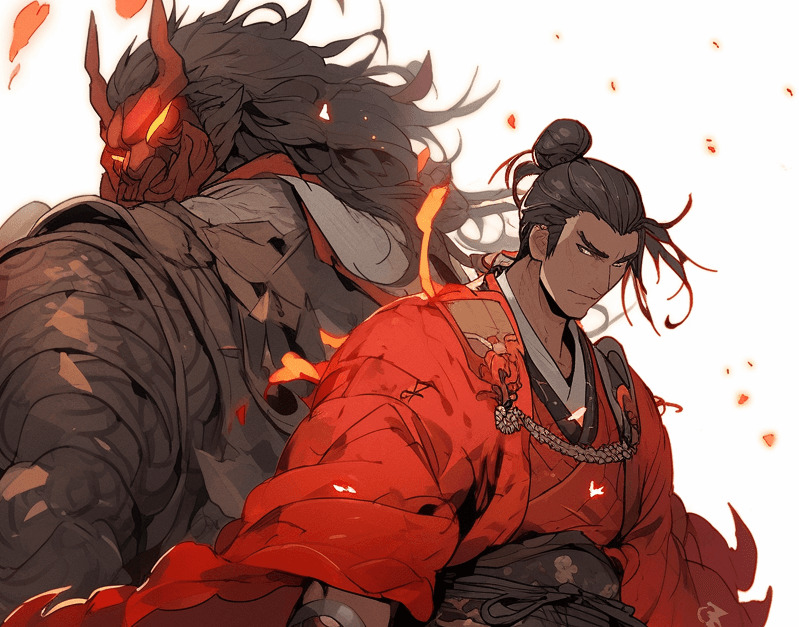
Takeda Shingen’s Ascendancy to Leadership:
In 1541, Takeda Shingen (then known as Takeda Harunobu) assumed leadership of the Takeda clan at the age of 21.
His father, Takeda Nobutora, was a powerful military leader and daimyo of the Sengoku period who had control over Kai Province (now Yamanashi Prefecture).
Despite Nobutora’s military prowess, his harsh rule and abrasive personality led to dissatisfaction among his vassals.
Rebellion against Nobutora:
Nobutora’s autocratic leadership style and a series of military campaigns that saw mixed success led to increased friction with his vassals.
By 1540, the dissatisfaction had reached a tipping point.
Shingen, along with a group of Nobutora’s vassals, staged a coup against his father.
Nobutora was exiled to Suruga (present-day Shizuoka Prefecture), and Shingen took over as the head of the Takeda clan.
Shingen’s Reign:
Following his successful coup, Shingen took over control of all of Kai Province.
His reign was marked by several successful reforms, including economic changes, and efforts towards the stabilization of his territories.
Shingen worked to strengthen the rule of the Takeda clan over their domain and expanded their influence into the Kanto region, which led to his military fame spreading across Japan.
“Fu-Rin-Ka-Zan” Strategist: The Tactics and Battles of Takeda Shingen
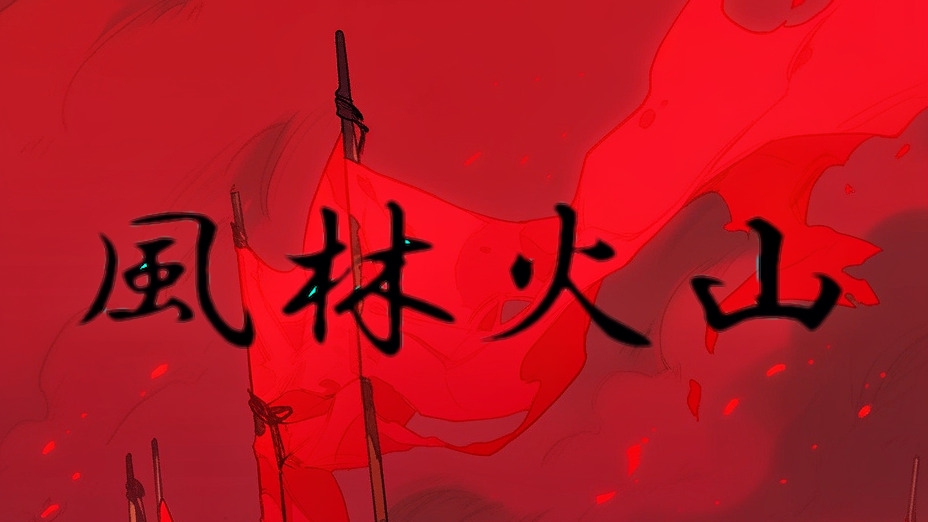
Takeda Shingen, one of the most iconic daimyo of the Sengoku era, was renowned for his strategic acumen, which was epitomized by his adoption of the maxim “Fu-Rin-Ka-Zan” as his battle banner.
This term, drawn from Sun Tzu’s “The Art of War”, translates to “Wind, Forest, Fire, Mountain”, representing “Fast as the wind, quiet as a forest, fierce as fire, and immovable as a mountain.”
Shingen’s tactical brilliance was evident in his numerous battles.
He was an innovator in the use of cavalry, which he used extensively in open-field battles, and his forces were known for their distinctive crimson armor.
His understanding of the importance of logistics and troop movement allowed him to carry out successful campaigns, even in the face of numerically superior foes.
Some of his most notable battles include the Battles of Kawanakajima against Uesugi Kenshin, where their rivalries became legendary.
These battles showcased Shingen’s ability to adapt his strategies to changing circumstances, and his use of deception and diversion tactics often led to surprising victories.
However, Shingen’s approach to warfare wasn’t solely focused on military might.
He also recognized the value of diplomatic and psychological tactics, and he frequently used alliances, threats, and strategic marriages to weaken his opponents and strengthen his position.
His approach to warfare, embodying the essence of “Fu-Rin-Ka-Zan”, makes Takeda Shingen a fascinating figure in the annals of military strategy.
Takeda’s Twenty-Four Generals

The “Takeda Twenty-Four Generals” refers to the 24 key vassals who served the Sengoku period daimyo, Takeda Shingen.
These individuals greatly contributed to the expansion of the Takeda clan’s power and governance of Kai Province (modern-day Yamanashi Prefecture).
It’s worth noting that the number “24” is symbolic, with more than this number having served Shingen in reality.
Here are some notable members of the Takeda Twenty-Four Generals:
Yamamoto Kansuke:
A significant strategist for the Takeda clan, Kansuke’s tactics and intelligence-gathering abilities greatly contributed to the success of the Takeda family.
Oyamada Nobushige:
A cousin of Shingen, he was active in many battles. He also contributed to maintaining peace in Kai later in his career.
Sanada Masayuki:
Known as the father of the famous general Sanada Yukimura, Masayuki was also an excellent strategist, making him an important vassal for the Takeda clan.
Amano Kagetaka:
A vassal of Shingen, known as Kanazawa Kai-no-kami. He distinguished himself in the Fourth Battle of Kawanakajima, a key battle for the Takeda’s expansion into the Kanto region.
These generals, through their strategic insight, military skills, and loyalty to Shingen, helped establish the Takeda clan’s position as a daimyo during the Warring States period.
The Relationships Between Takeda Shingen, Tokugawa Ieyasu, and Uesugi Kenshin
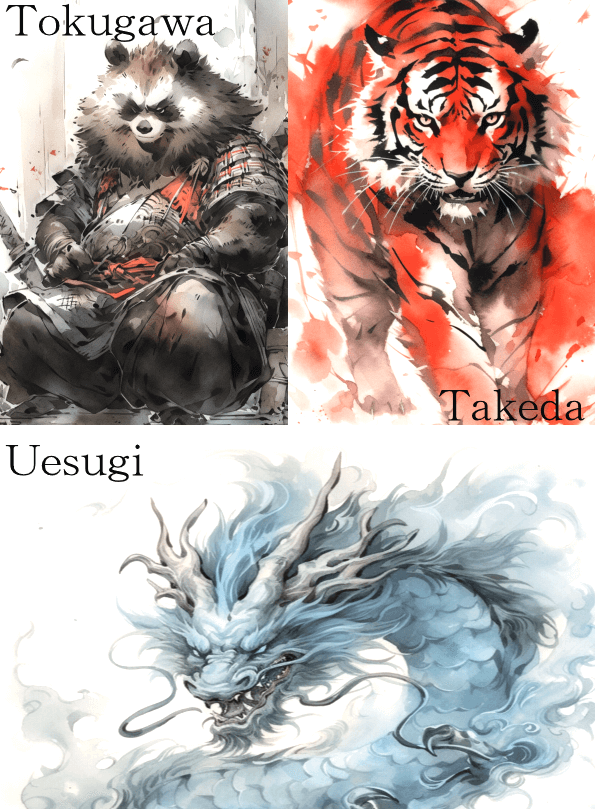
In Japan’s Sengoku period, local lords, or daimyō, frequently competed with each other to establish and expand their territories.
Among these, three figures stand out: Takeda Shingen, Tokugawa Ieyasu, and Uesugi Kenshin.
Their relationships were complex and fraught with tension.
Takeda Shingen and Uesugi Kenshin:
The relationship between these two was notably competitive, best exemplified in the famous Battles of Kawanakajima.
These battles, fought five times in total, showcased their military prowess and tactics, though no conclusive victor emerged.
Takeda Shingen and Tokugawa Ieyasu:
Shingen and Ieyasu were also in an adversarial relationship.
Shingen invaded Ieyasu’s territory multiple times, the most famous instance being the Battle of Mikatagahara in 1572, where Ieyasu barely managed to resist Shingen’s onslaught.
Uesugi Kenshin and Tokugawa Ieyasu:
The relationship between Kenshin and Ieyasu isn’t as well-documented, but Kenshin did oppose Shingen, thus indirectly supporting Ieyasu.
Each of these three daimyō ruled different regions and clashed with other lords in their bids to increase their influence.
As a result, the relationships between them were intensely competitive and fraught with tension.
Conquest of the Realm: Expansion into the Kanto Region and Unification of Kai Province

Shingen was a visionary leader, characterized by his unique governance style, which was a fusion of military prowess and economic reform.
He stabilized the region, reinforced the rule of the Takeda clan, and transformed Kai Province into a domain that embodied both prosperity and defense.
However, it was his ambitious expedition into the Kanto region that indelibly etched his name into the annals of Japanese history.
The Kanto region, controlled by the powerful Hojo clan, held immense value due to its vast resources and strategic location.
In the 1560s, Shingen’s decision to advance into the Kanto region was driven not only by the desire for wealth but by the strategic necessity of dominating this significant area.
This move resulted in conflict with another formidable daimyo of the Warring States period, Uesugi Kenshin.
Their rivalry, epitomized by the Battles of Kawanakajima, comprised five engagements that displayed their military strategies but concluded without a decisive victor.
Despite these challenges, Shingen made significant progress in the Kanto region, acquiring territories and paving the way for further expansion.
The Battle of Kawanakajima: The Fierce Clash with Uesugi Kenshin

The Battle of Kawanakajima erupted in the mid-16th century in Kawana, Shinano Province, Japan.
This region served as a border between the territories of Takeda Shingen and Uesugi Kenshin, which led to territorial disputes and ignited the conflict.
Both Shingen and Kenshin were renowned military commanders, and they approached the battle with mutual respect and unwavering determination.
The battle was fought five times, with each encounter witnessing intense combat and the display of exceptional tactics and bravery.
Cavalry charges, long-range archery attacks, and fierce sword duels dominated the battlefield.
These battles were brutal and resulted in the loss of many samurai warriors and soldiers.
Shingen and Kenshin employed distinct strategies in their confrontations.
Shingen utilized unique tactics such as feigned retreats and ambushes to outmaneuver his opponent.
On the other hand, Kenshin focused on defensive formations and steadfast resistance to withstand Shingen’s assaults.
The cunning and adaptability of both commanders played a significant role in shaping the outcome of the battles.
While the Battle of Kawanakajima did not result in a definitive victory for either side, the clashes between Shingen and Kenshin became noteworthy episodes in Japanese history.
The battle showcased the skills and determination of these two iconic warlords, leaving a lasting impact on Japan’s martial history.
In conclusion, the Battle of Kawanakajima was a fierce and legendary conflict between Takeda Shingen and Uesugi Kenshin.
Their encounters on the fields of Kawanakajima exemplified their strategic brilliance, martial prowess, and unwavering resolve.
This epic clash remains a significant symbol of the intense rivalries and military excellence during the Sengoku period in Japan.
The Death and Last Testament of Shingen
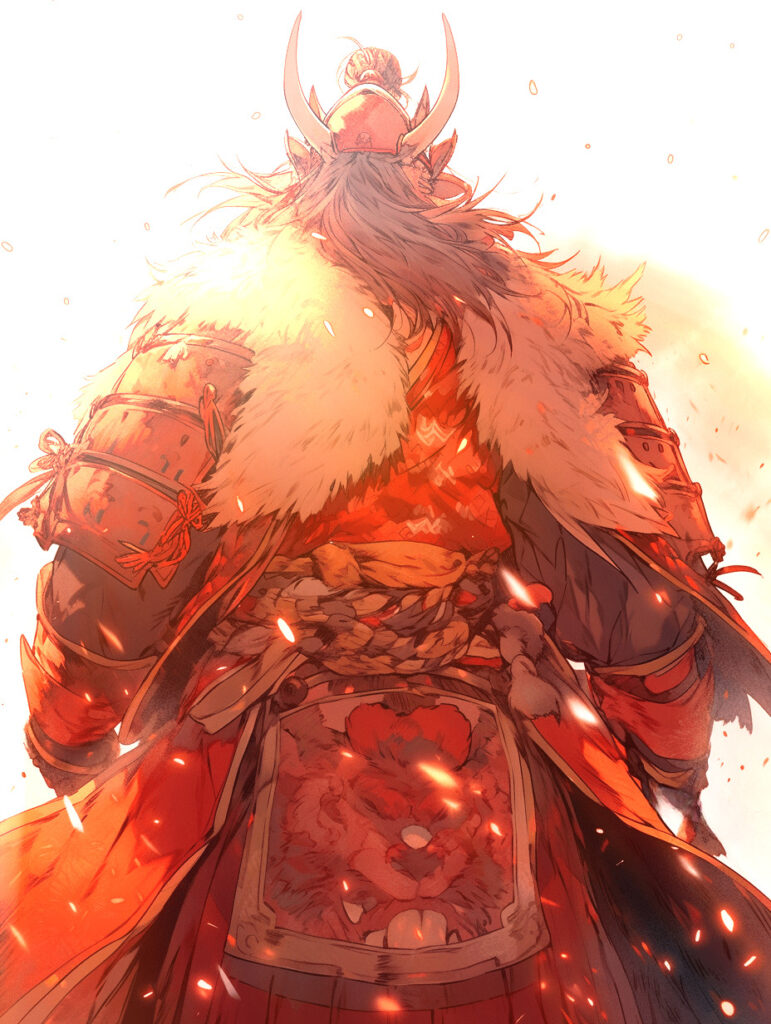
Shingen’s death and last testament became his final trial in life.
As the head of the powerful Takeda clan, he ruled over the province of Kai and commanded great respect as a leader among his family and retainers.
In 1573, Shingen fell ill and eventually succumbed to his illness, passing away on his deathbed.
His death dealt a heavy blow to the Takeda clan, and it marked a pivotal moment in the fate of the daimyo families during the Sengoku period.
Shingen, aware of his own influence, left a specific instruction in his will that his death should be kept hidden for three years.
His last testament also included important directives to ensure the future succession of leadership and the safety of his family.
Shingen designated his son, Takeda Katsuyori, as his successor and called upon his retainers to support and protect him as well as safeguard the welfare of the family and their territories.
Within his testament, Shingen urged his family and retainers to maintain loyalty, cooperate with one another, and offer mutual support.
He emphasized the unity of the family and expressed his heartfelt wishes for their happiness and prosperity.
However, following Shingen’s death, the Takeda clan faced internal conflicts and external attacks, leading to their decline.
Ultimately, the clan met its demise, and Shingen’s ambitions and legacy were cut short.
The death and last testament of Shingen symbolized the end of his reign and the decline of the Takeda clan. Nonetheless, his presence and achievements continue to be revered in Japanese history.
Shingen is remembered as a hero of the Sengoku period, leaving behind a lasting legacy.
Takeda Shingen and Anime, Manga, Games
Takeda Shingen is a popular subject in various forms of entertainment media, including anime, manga, and games. His strategic prowess, bravery, and image as a hero of the Sengoku period are portrayed in these works.
In anime and manga, Takeda Shingen appears in titles such as “Sengoku BASARA” and “Nobunaga Concerto,” where his tactics and unique personality are depicted.
He is shown confronting formidable enemies and facing the tumultuous events of the Sengoku period, highlighting his resolute attitude and charismatic leadership.
In games, Takeda Shingen is a frequently featured character. In Sengoku-themed simulation games like “Nobunaga’s Ambition” and action games like “Samurai Warriors” and “Sengoku BASARA,” players can take control of Takeda Shingen to engage in battles or relive his remarkable achievements in the Sengoku era.
His tactics and combat skills are faithfully reproduced in the gameplay, allowing players to immerse themselves in the world of the Sengoku period alongside him.
Additionally, there are historical novels and visual novels that revolve around Takeda Shingen, delving into his life and the political landscape of the Sengoku period in great detail.
These works explore his humanity, struggles, and relationships with his family and retainers, offering a deeper understanding of his character.
Takeda Shingen’s presence in anime, manga, and games allows his compelling qualities and the dramatic backdrop of the Sengoku period to reach a wider audience.
These works serve as a means to convey his achievements and legacy to more people, ensuring that his name and deeds remain celebrated as a hero of the Sengoku period.
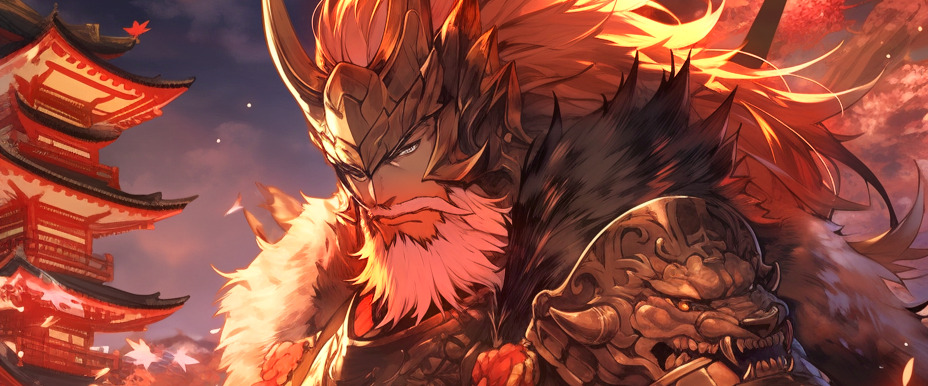



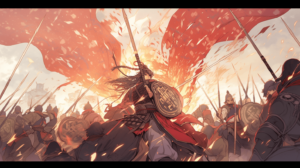
Comments